Two contending schools of thought on rezoning continue to divide Chinatown. And the neighborhood might be running out of time.
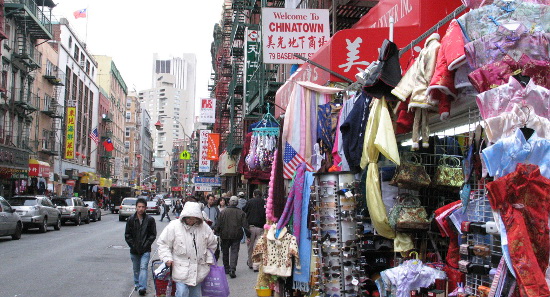
June 2, 2017
Like all young parents, Songfang Lin and her husband were overcome with emotions when they welcomed their first baby recently. But the happiness soon was shadowed by a request from the landlord of their tiny studio on East Broadway in Chinatown. “She asked us to pay $60 more per month for rent because she said we have one more person living in the apartment now,” said Lin.
The rent for Lin’s apartment has already gone up 5 percent annually for the past three years, and now stands at more than $1,000. Lin is worried that they would not be able to afford the monthly rent. The family’s sole source of income is what her husband brings home from toiling in a Chinese restaurant. “My husband works in Chinatown and we don’t speak English. We don’t want to be pushed out from Chinatown,” said Lin, an immigrant from Fujian who moved to this country five years ago.
Lin is one of the many residents of Chinatown worrying about being pushed out of the community. The Furman Center of Real Estate and Urban Policy of New York University last year listed Chinatown as one of the 15 gentrifying neighborhoods in the city. According to the study, the average rent in Chinatown jumped 50 percent in the past 20 years, compared to 22 percent for the city.
As a result, tenants being harassed by greedy landlords and empty storefront units vacated by small businesses that folded up or pushed out became common stories. The entire community agrees that it badly needs to stop the bleeding.
That was the easy part. The hard part is getting a consensus on how to do it. This question has already turned some friends into enemies, and the tension is getting even more heated in this election year.
Lin didn’t know exactly who or what is to blame for her family’s ordeal; but she considers “gentrification” the culprit.

Wing Lam, executive director of the Chinese Staff and Workers Association (CSWA) and a long-time housing activist in Chinatown, however, points an accusing finger at the city without hesitation. “Many luxury buildings were erected in Chinatown and the Lower East Side in recent few years. These push up the rents,” Lam said. “If the city keeps refusing to listen to the community, in 10 or 15 years, there would be no Chinatown anymore.”
In the past few years, Lam and other activists have been fighting to have the city adopt a rezoning plan that, they said, was made by the community. The efforts have been fruitless so far, but he expects some breakthrough this year when politicians facing reelection, including Mayor Bill de Blasio and Councilmember Margaret Chin who representing Chinatown, are more likely to listen to their constituents. Furthermore, Lam was able to find supporters from academia. A book published in December 2016, titled Zoned Out! Race, Displacement and City Planning in New York City, tends to agree with his views.
The book, edited and written by Tom Angotti, a professor of Urban Policy and Planning at Hunter College, together with several other scholars, claimed that: zoning has always been a tool of the city to squeeze the neighborhoods of people of color; affordable housing coming out of the city’s rezoning plans is a scam because it is not really affordable for low income people; and the only way out is to shift to community-based planning where the community rather than the city leads the way.
The book is acclaimed in some minority neighborhoods. In Chinatown, which is one of the neighborhoods that served as one of the case studies in the book, grassroots activists held a book-launching forum right after it was published last year, where the editors and contributors were greeted with warm applause. In the cheers and claps, a thorny problem seems to have found its solution. For who will dispute that the community should have the say on its own future? Except that in Chinatown, a thornier question has to be answered first: Who is the community?

Zoning has been a long-festering topic in Chinatown, where there has been no comprehensive rezoning plan in more than half a century. But it has gotten more intense since 2008 when the city passed a rezoning plan for the East Village and the Lower East Side.
The plan, covering more than a hundred blocks in the area, downzoned the blocks where the residents are mostly white, which means the height of new developments in these blocks are limited. It also upzoned some minority dominated blocks in the Lower East Side, allowing taller buildings to be built.
As a result, high-rise buildings can no longer be built in the center of East Village. Instead they have to look for locations in the less affluent parts of the Lower East Side and in Chinatown where building heights are largely not limited by zoning.
Since then, several high-rise luxury hotels and residential buildings have been built or are under construction in the predominantly minority populated streets in the Lower East Side and Chinatown. A few residential buildings along the East River plan to go up to at least 60 floors. One of them, an 80-story apartment building built by Extell Development Company on the site previously occupied by the Pathmark supermarket, is to be completed in 2019. And it is already a hot commodity in the market with an average sales price of $2,200 per square feet.
This is what alarmed Lam and many grassroots activists in Chinatown. After all, Chinatown is a neighborhood where the median income is less than $40,000. “What good it can do to the poor people to have rich neighbors? Nothing, other than that they’d boost up the real estate market and pump up your rents,” Lam said.
Even those who don’t agree with his views agree at least on one thing: The neighborhood deserves a rezoning plan in order to have the future development under control.

This idea prompted the formation of Chinatown Working Group (CWG) in October 2008, an ad hoc initiative that, at its prime time, included representatives from almost all community organizations. The organization aimed to to make a rezoning plan for the neighborhood. The plan was unveiled in early 2014 and it covers the entire Chinatown and the predominantly minority Lower East Side. It calls for making the neighborhoods a “special district,” a zoning concept that imposes restrictions on landlords on changing the structure and, sometimes, the usage, of their properties.
The plan then divides the area into five sub-districts. Each has its own specific regulations. But for most blocks, it calls for height limits, a much higher percentage of mandatory affordable units in most new buildings than the city’s current requirement, and a much lower income eligibilities for tenants.
The city deems the plan too ambitious and unrealistic. The plan made little progress from paper to reality since it was released by the CWG. But to Professor Angotti, this is the planning model that all neighborhoods in the city, especially the low-income ones for people of color, should follow.
In the book, Angotti and his team accused that all the previous city-led, top-down rezoning plans as racist. They often end up protecting the higher-income neighborhoods, usually with a white majority population, from downzoning or contextual zoning, that limits the density and maintains the traditional identity of the neighborhoods. And the low-income neighborhoods, normally populated by minority people, have been bearing the brunt of the profit-driven development.
Angotti believes that the city’s inclusionary zoning has failed those who need them the most. Inclusionary zoning is a tool the city has been heavily relying on to increase affordable housing since the Bloomberg administration. It provides incentives to developers to make them allocate a certain portion of their property as affordable units.
He said because affordability is measured by the Area Median Income (AMI) — a HUD-released figure based on the incomes of the entire city and the adjacent suburbs rather than the incomes of a particular neighborhood – the so-called affordable units are often not so for people in the low-income neighborhoods.
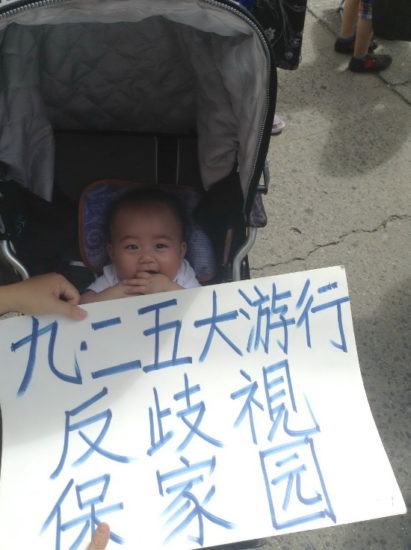
In Chinatown, for example, the median income is lower than the citywide $64,786 by more than $20,000. The disparity made the 2015 groundbreaking of the long overdue redevelopment project of the Seward Park Urban Renewal Area less exciting for many low-income people in the neighborhood.
Although the city allocated 500 permanent affordable units out of the 1,000 apartment units that are being built on this 20-acre land that had been vacant since the late 1960s, the income threshold makes half of the population in Chinatown not eligible because their incomes are too low.
“When I hear the word affordable, the real question is, affordable to who?” asked Angotti.
To Angotti, the absence of community planning is the root cause of the problem. “Now, it simply depends on the outside forces, like the city agencies and private developers to make the decisions themselves. When community people are involved, it’s often too little and too late, and in reaction to proposals that come from outside,” said Angotti.
He gives high marks to the rezoning plan the CWG proposed. “One of the main principles of the plan was preservation of the existing Chinatown, particularly the low to mid-rise core of Chinatown. I would agree with that,” said Angotti. “The Chinatown Working Group includes people from different sectors of the community who engage in the discussion over a long period of time. And they reached consensus on it. It represents a democratic process. The city should adopt that plan.”
But not everyone agrees with Angotti on the racial factor of the city’s zoning plans, not even within the academia. “Cities often use rezonings to spur investment in areas that have suffered from a lack of development and investment,” said Ingrid Gould Ellen, a professor of urban planning and policy at the Graduate School of Public Service and the faculty director of the Furman Center at New York University .
“It’s pretty clear that high-income neighborhoods in NYC are experiencing quite a bit of development and are seeing increased density through a large number of individual lot rezonings.”
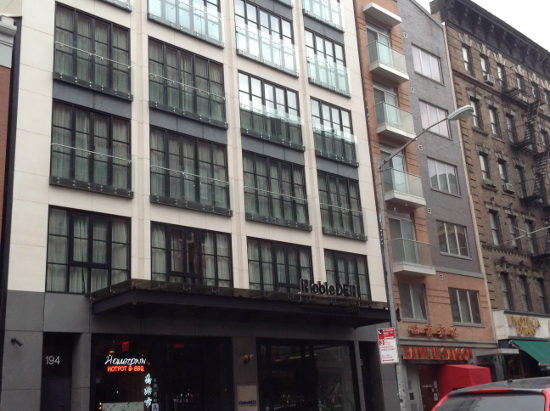
Ellen doesn’t think that replacing the AMI with a neighborhood-based income threshold is a good idea. According to her, it would only make the affordable housing units in rich neighborhoods affordable to people with relatively high income. As a result, it would only exacerbate existing levels of economic segregation and poverty concentration.
Although Ellen said she believes that it is important to help low-income people keep their homes, she also noted that affordable housing that doesn’t precisely match the incomes of existing households in a neighborhood doesn’t displace any lower-income households. “It provides additional housing. And that additional affordable housing should alleviate pressure on rents for low and moderate income households throughout the city,” said Ellen.
In Chinatown, however, not everyone agrees with the CWG’s plan either. Whether the CWG plan represents the view of the community depends on whom you ask.
Since its formation, the CWG has been like a war zone. The regular meetings were often taken over by vehement arguments and quarrels among members with different interests. At times, the atmosphere was so heated that it feels like a physical fight would erupt any moment. But it was after early 2014, when Pratt Center for Community Development – which was hired by the CWG as a consultant to help shape the plan – presented the draft to be voted by the members, that the network started to fall apart.
Organizations with different and sometimes opposing views dragged the voting process into endless battles. Those who thought the plan too radical, and that the limits on the heights of new buildings and on allowable remodeling of old buildings would freeze development and kill Chinatown started to distance themselves from the group.
In May 2014, the Kimlau Chinese Memorial Post 1291 of The American Legion, a community organization that had been providing a meeting room for the CWG since its formation, announced it would stop doing so because the CWG had failed to pass any concrete plan for more than five years. A month later, five traditional organizations, including the Chinese Consolidated Benevolent Association(CCBA) – one of the most important organizations known as the city hall of Chinatown – announced their withdrawal from the CWG.
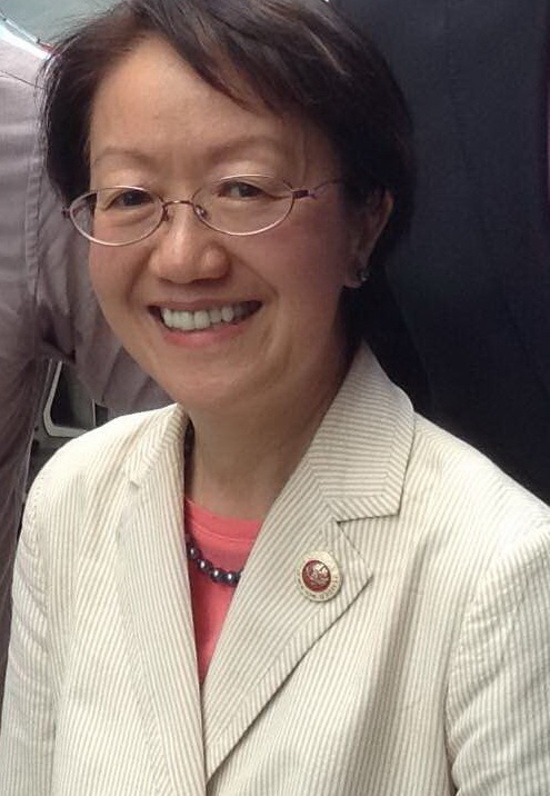
By the end of 2015, when the plan was eventually passed, 24 organizations had withdrawn from CWG, including major ones such as the Asian Americans for Equality, Chinese Chamber of Commerce of New York and Chinatown Partnership. In the end, no traditional family association, a major sector of community organizations in Chinatown, voted yes on the plan. And although the plan covers East Broadway, a street dominated by Fujianese immigrants, no Fujianese organization voted on it either.
“If that plan is adopted by the city, Chinatown would die,” said Jan Lee, a member of the Property Tax Payers Association, one of the organizations that withdrew in 2014. Lee, a third-generation Chinese whose family owns 30 apartment units in two residential buildings on Mott Street, said many properties in Chinatown are owned by older generation immigrants and the family associations. But the CWG’s plan doesn’t differentiate small property owners and big developers.
“The CWG is a group of people who don’t own anything but making a plan for Chinatown,” said Lee. “Under that plan, we cannot develop our land. And Chinatown would have no progress. It would be a neighborhood for seniors and no more young people to fill the gap. In the next 50 years, Chinatown would die.”
For Lee, the ideal model for Chinatown is the redevelopment of 196 Grand Street. On its site stands a six-story trendy hotel called Noble Den, that has a with a hot pot restaurant that enjoys a long waiting line almost everyday as its street front unit. “That building was developed by Chinese, built by Chinese workers, the restaurant is run by Chinese, and its customers are not white tourists but Chinese,” said Lee. “That’s what we small property owners in Chinatown would like to see. Is it a bad thing?”
Jimmy Cheng, president of United Fujianese American Association, one of the organizations that withdrew from the CWG in 2014, agrees. “The height limits in the CWG plan would suffocate the development in Chinatown. Businesses here won’t be able to get customers. More shops would close,” said Cheng.
“Do low-income people only deserve to be living in ghettos?” asked Cheng. “The residential buildings in Chinatown are so dilapidated. They are not safe. It (not allowing new buildings) is a kind of discrimination against low-income people.”

Those who stayed with the CWG kept fighting. In early 2015, the city indicated that it may accept some parts of the rezoning plan but said it is not possible to accept the whole plan entirely. The majority of the remaining members thought that was doable, but Lam and his supporters insisted that they are not amenable to piecemeal adoption of their plan.
“That’s when the majority of the group and the small percentage of the group started arguing about this particular thing. The rest of us were turned off by them,” Anthony Wong, chair of the CWG through 2015, said. The fights made many of the members frustrated.
In the summer of 2015, the CWG completely ceased activities until Lam and a few other like-minded groups reconvened to revive the CWG. Only those who agreed with Lam’s rezoning plan were present. “The CWG they formed is a different group from the original one,” said Wong.
This is the complex problem that Councilmember Margaret Chin has to face every day. The councilmember representing Chinatown started her career as a housing activist when she worked shoulder-to-shoulder with Lam. Now the views of the two old colleagues couldn’t be more distant. Chin thinks positively about zoning in the city. “Zoning is meant to help protect the community and preserve quality of life,” Chin said. As such, she chooses to work with the city to increase affordable units in Chinatown.
Through the years, she has helped to pass the redevelopment plan for the Seward Park Renewal Area; secure 100 units for senior housing on the site of the Elizabeth Street Garden; make a deal for adding affordable housing on the old Pathmark site on Cherry and Allen Streets; and extend the affordability of the units in the Two Bridges housing for 40 more years.
But now, she has become a target of Lam and other grassroots activists who accuse her of not fighting hard for the low-income people.
But Chin said that as an elected official, she has to represent everyone. “We have a lot of public housing on the edge of Chinatown. Those are affordable housing for the real low-income families,” said Chin.
“For the new affordable housing that are being developed, we have to take into consideration people of all income levels, people who are working, the younger people who just graduate from college and want to stay in the community. That’s why the affordable units cannot just be all low income. We want to make sure we have people in the community who are able to spend money in the community,” Chin said.
The disagreement is bound to escalate this year when Mayor de Blasio and Councilmember Chin, both of whom are blamed for the stalemate on the Chinatown rezoning plan by the grassroots activists, are facing multiple contenders in their reelection campaigns.
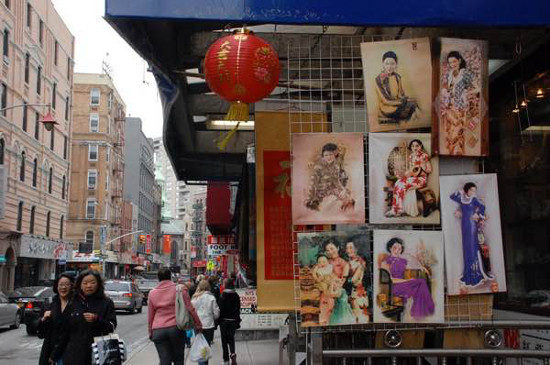
On March 16, Lam and others organized a protest in front of City Hall. Hundreds of people showed up.
“Do we ask for too much? I don’t think so,” said Lam. “If East Village can get the zoning protection they wanted, why can’t we? Is it only because we are not white?”
In Chinatown / Lower East Side, three people have registered with the city’s Campaign Finance Board to run for the City Council against Chin. And all of them more or less side with Lam on the rezoning issue and blame Chin for the overdevelopment in the neighborhood.
Meanwhile, people in the community who don’t like the CWG’s rezoning plan are also gearing up. “Just because they are loud doesn’t mean they are right,” said Lee of the Property Tax Payers Association. And if the city shows any willingness of adopting the plan, Lee said, “we are ready to fight back.”
To Ed Ma, a member of Community Board 2 who has been attending the CWG meetings, these fights may not be bad thing. “Many good ideas come out from conflicts,” said Ma. “The whole nation moves forward in conflicts, and Chinatown can certainly do so too. But I just hope a solution can emerge before Chinatown is bought over by big developers.”
To Songfang Lin, the problem is more urgent. “If things won’t change and the rent keeps going up like this, I am sure in one or two year, we’ll have to leave Chinatown,” said Lin. “But where can we go?”



